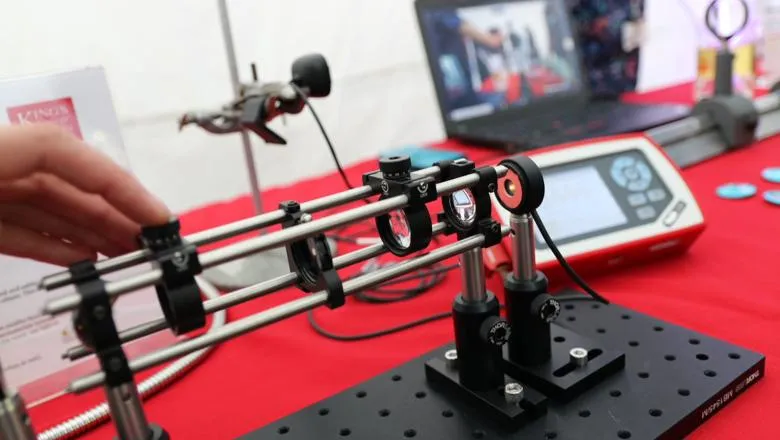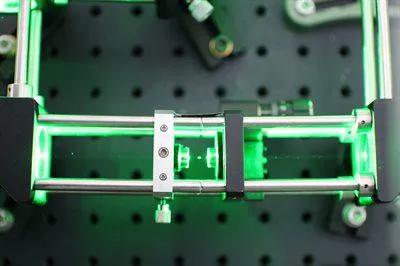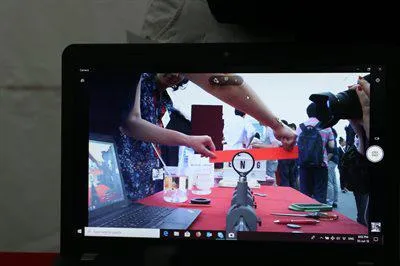10 July 2018
Physics features at Royal Society Summer Science Exhibition Lates
On 3 July, researchers from the Photonics & Nanotechnology group at King’s College London made the short trip down the Strand to showcase their high quality research to members of the public at the Summer Science Exhibition Lates at the Royal Society. The demonstrations revolved around the control of light for applications in imaging metrology, sensing, quantum technologies and advanced materials for nanophotonics. Royal Society Research Fellow Dr Sasha Rakovich’s demonstration was aimed at highlighting the significance of spatial control of light for sensing applications and why nanomaterials, such as nanorods, can form the basis of next generation sensing devices.
 Optical equipment
Optical equipment Dr James Millen showed particles levitated by an optical trap. Used as optical tweezers in single-molecule atomic force microscopy, this demonstration enables him to explore the limits of quantum physics to build mind-bending new technology.
Dr James Millen showed particles levitated by an optical trap. Used as optical tweezers in single-molecule atomic force microscopy, this demonstration enables him to explore the limits of quantum physics to build mind-bending new technology.  Dr Eva Philippaki, along with research student Michela Picardi showcased how to create real-life invisibility cloaks. Previous research in metamaterials enabled them to change optical properties and bend light, which demonstrates how cloaking can work in one dimension with simple geometrical optics.
Dr Diane Roth and Luke Nicholls demonstrated an all-optical sensing system based upon a nanostructured array of metallic nanorod. These nanorods are extremely sensitive to changes in their environment and therefore make a great optical sensor. In their demo, they used this sensing capability to detect hydrogen. You can view a previous demo of this technology on the Reactive Plasmonics YouTube channel.
Dr Eva Philippaki, along with research student Michela Picardi showcased how to create real-life invisibility cloaks. Previous research in metamaterials enabled them to change optical properties and bend light, which demonstrates how cloaking can work in one dimension with simple geometrical optics.
Dr Diane Roth and Luke Nicholls demonstrated an all-optical sensing system based upon a nanostructured array of metallic nanorod. These nanorods are extremely sensitive to changes in their environment and therefore make a great optical sensor. In their demo, they used this sensing capability to detect hydrogen. You can view a previous demo of this technology on the Reactive Plasmonics YouTube channel.


